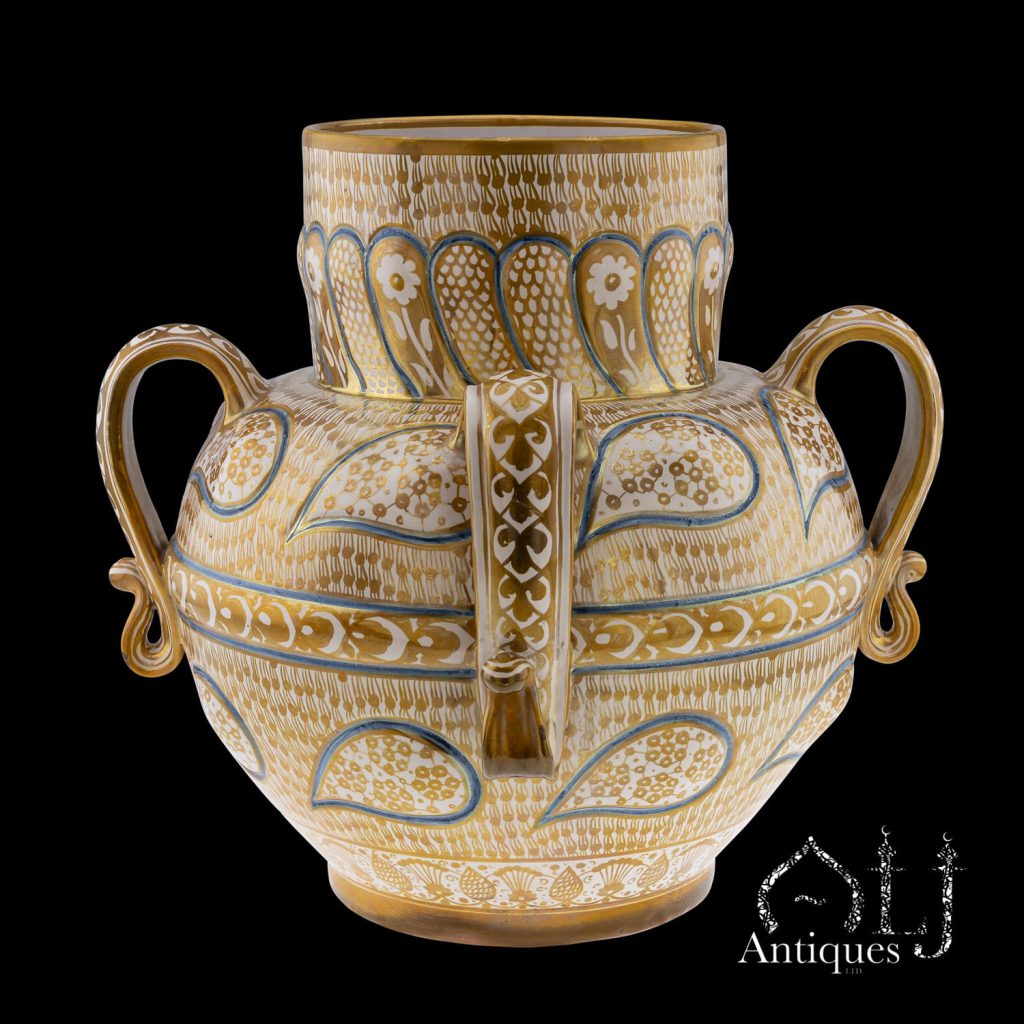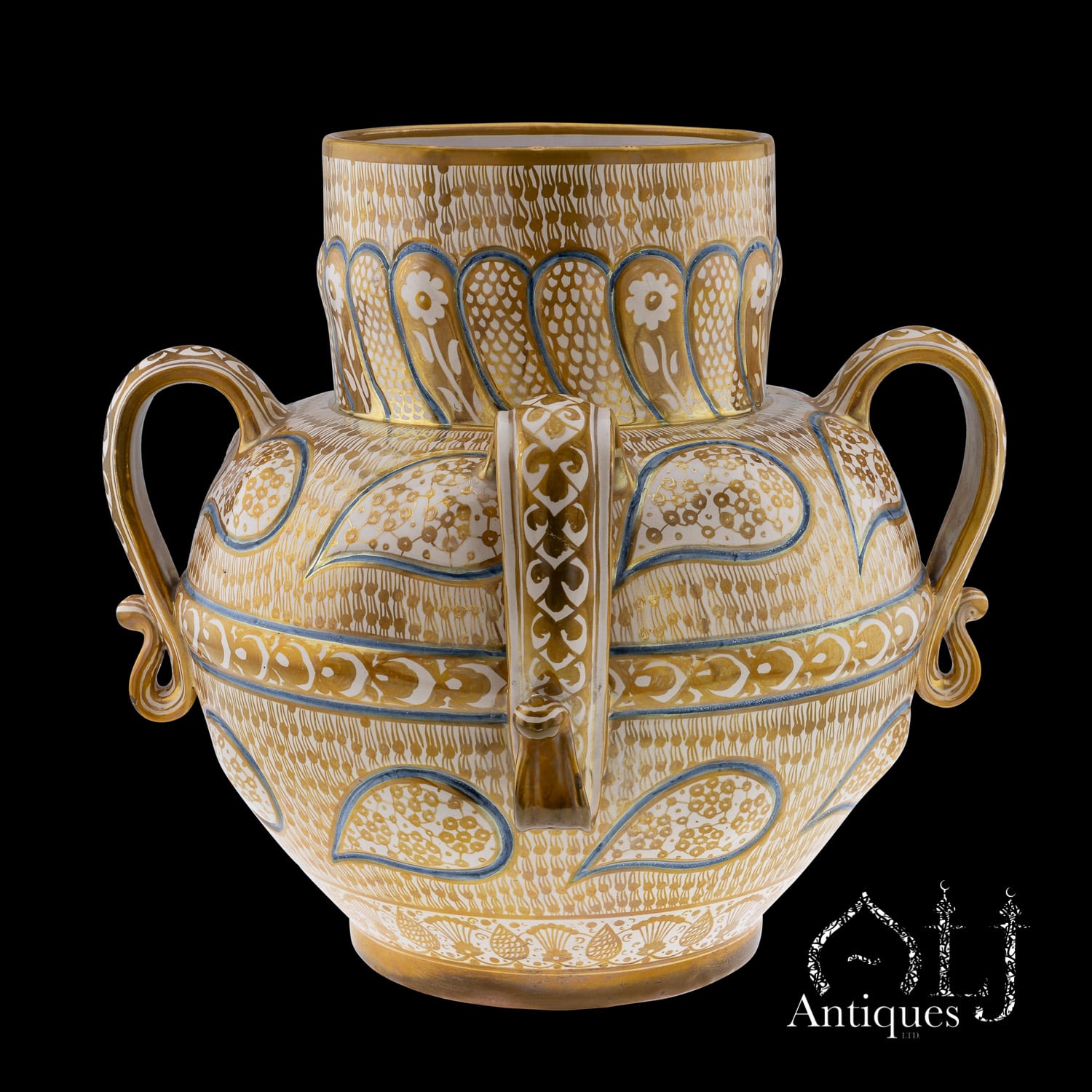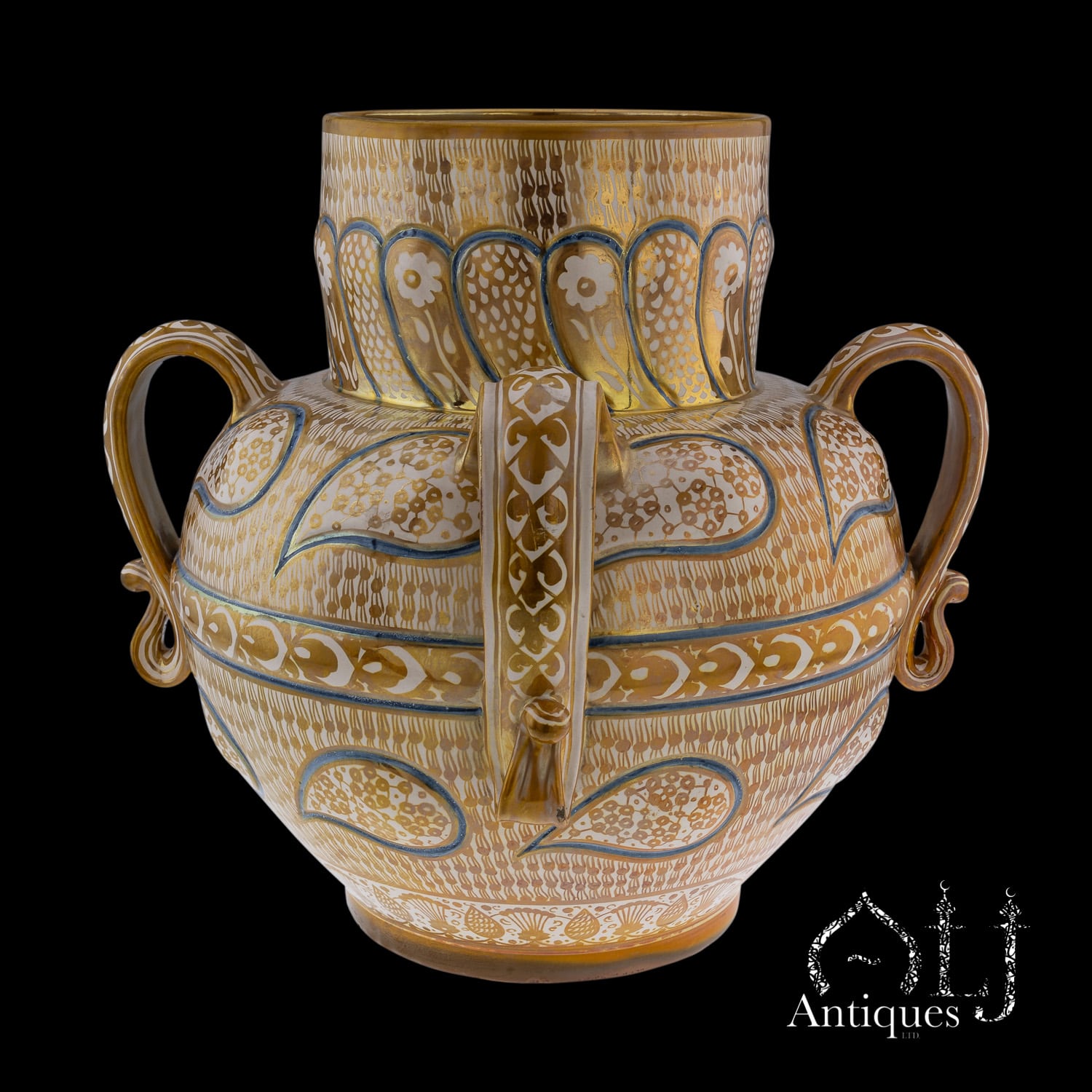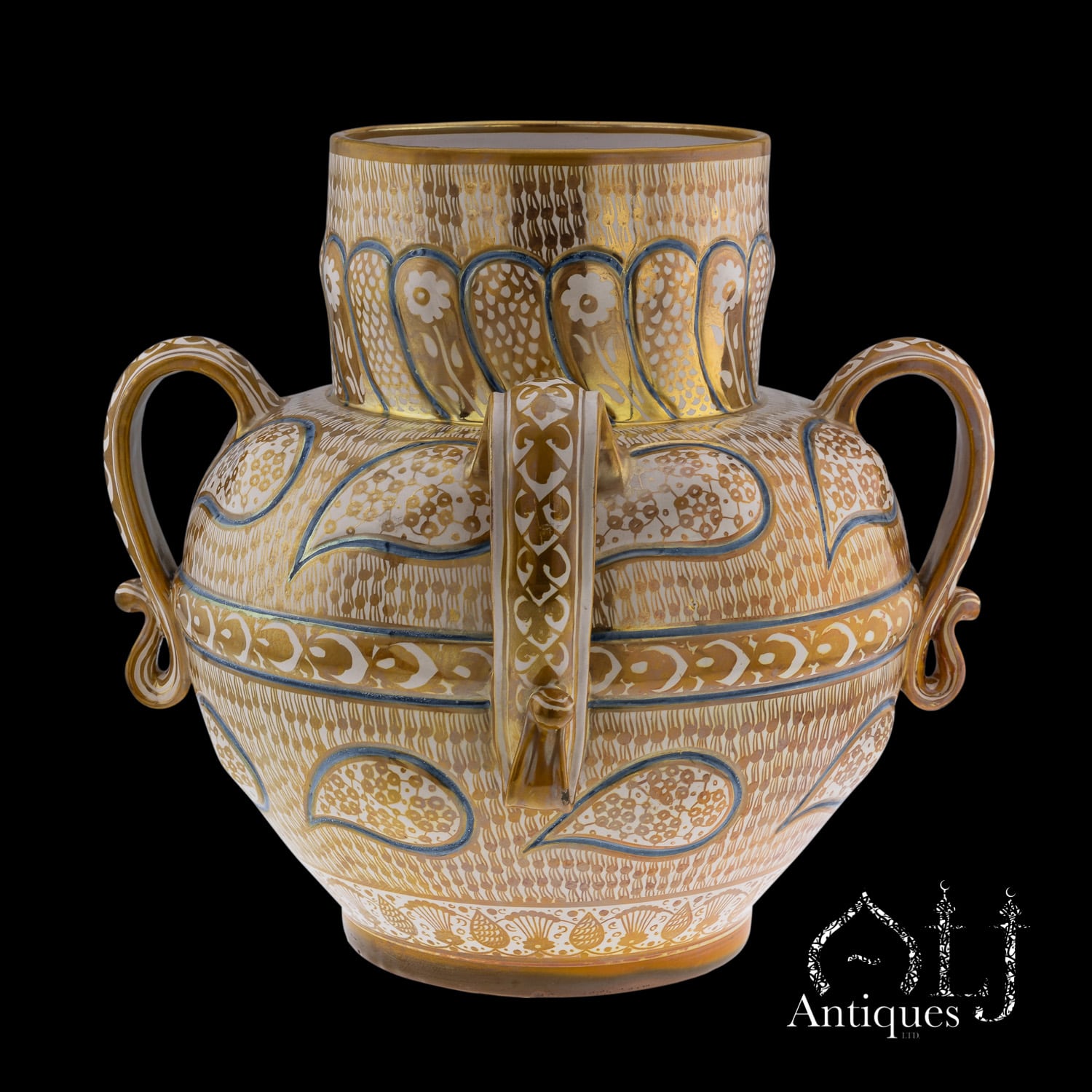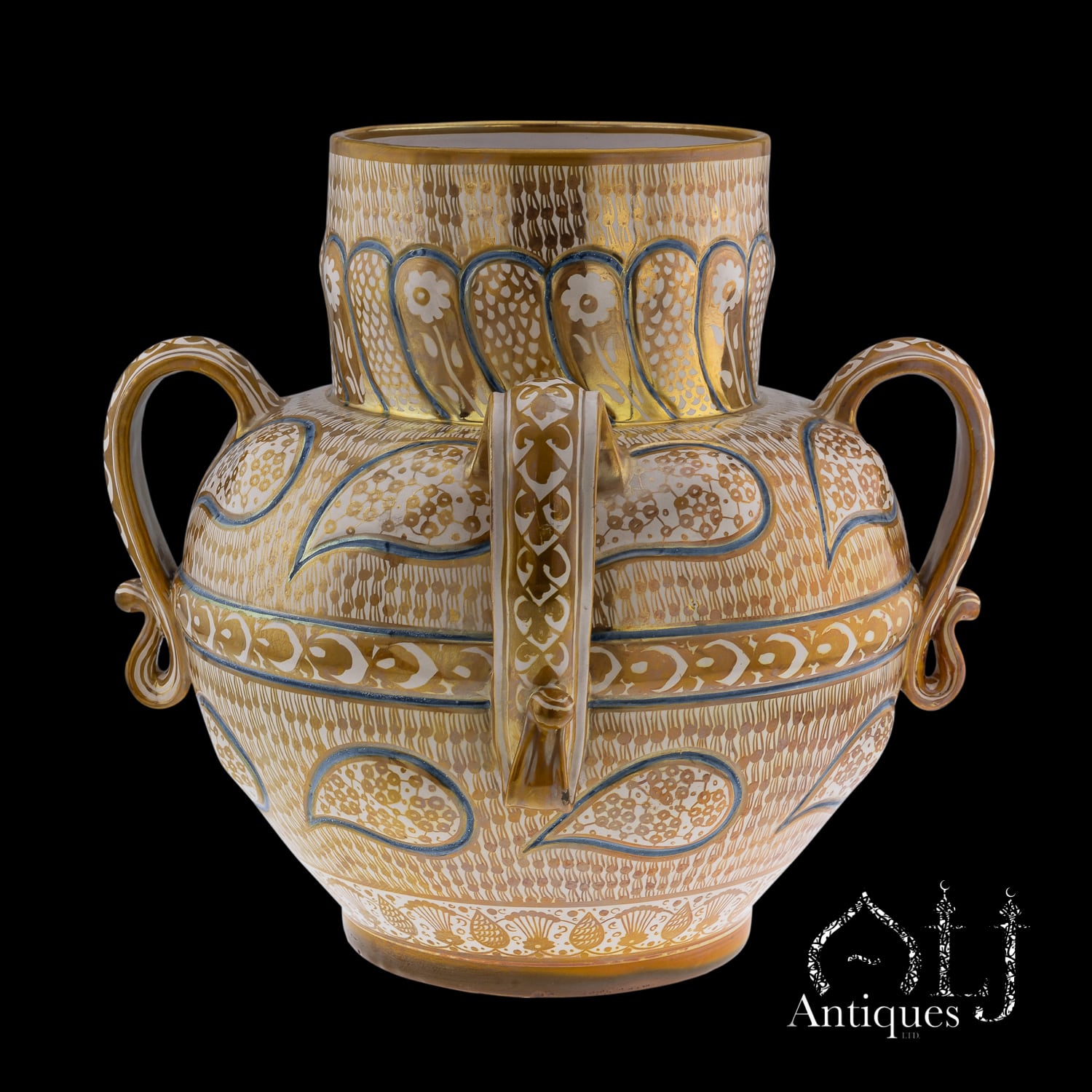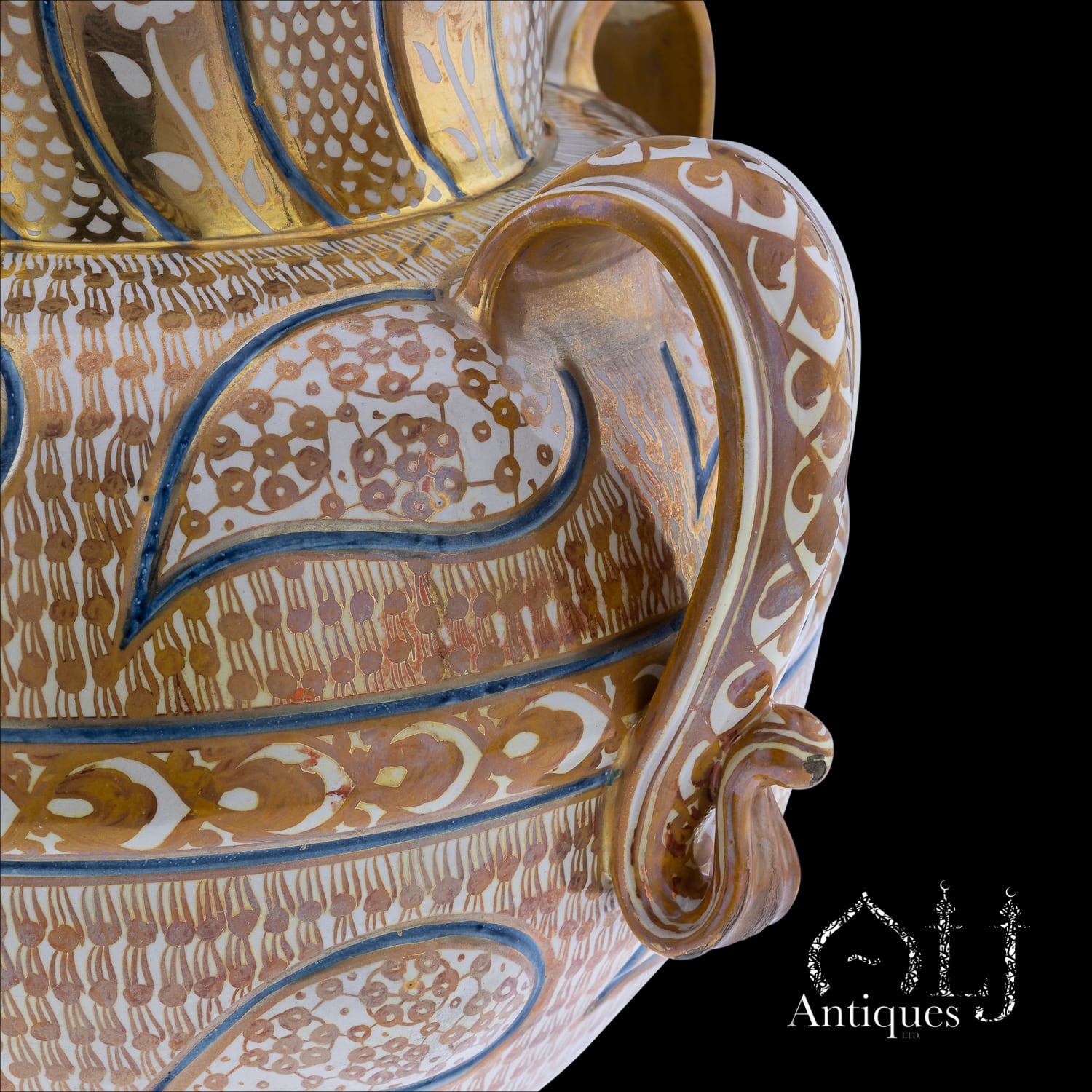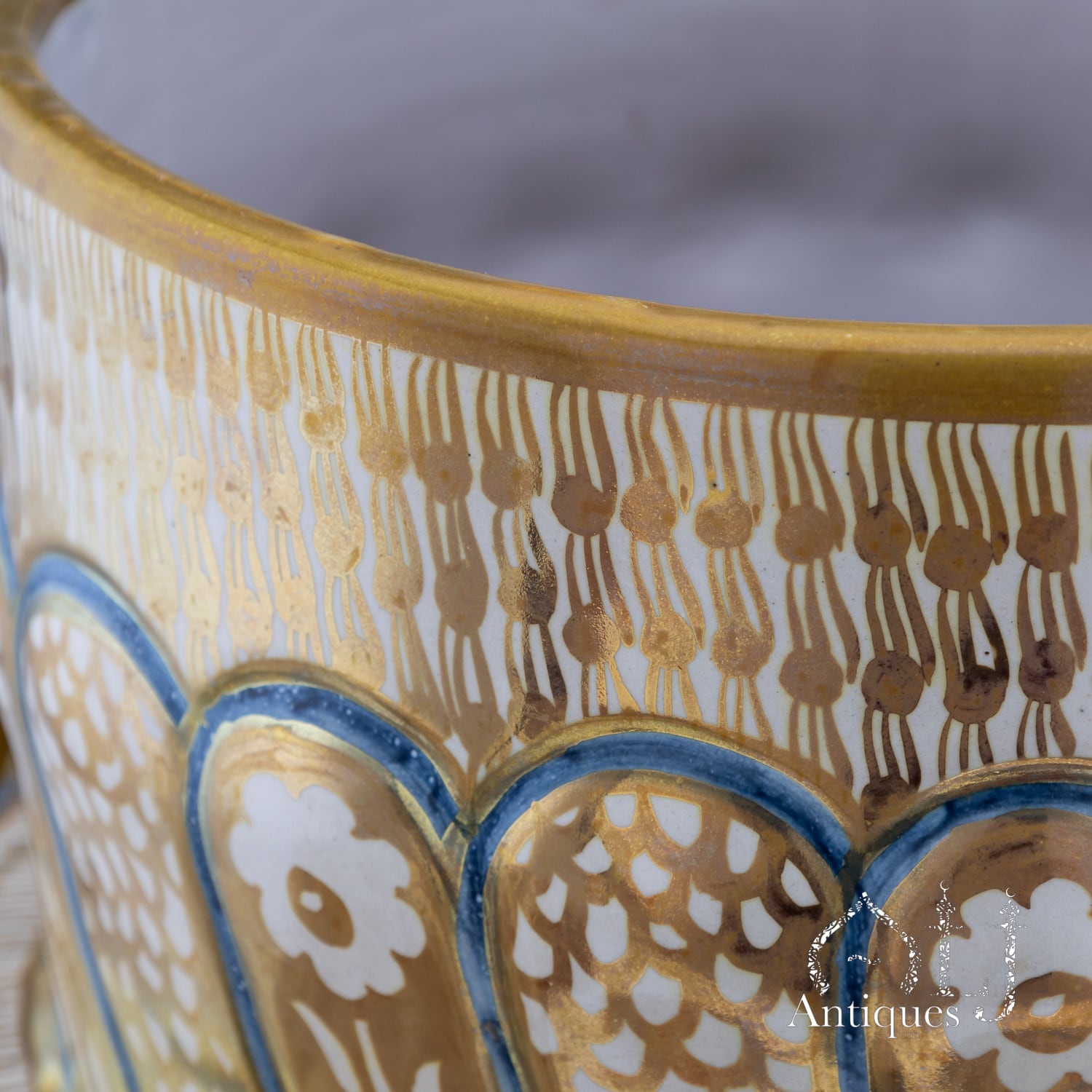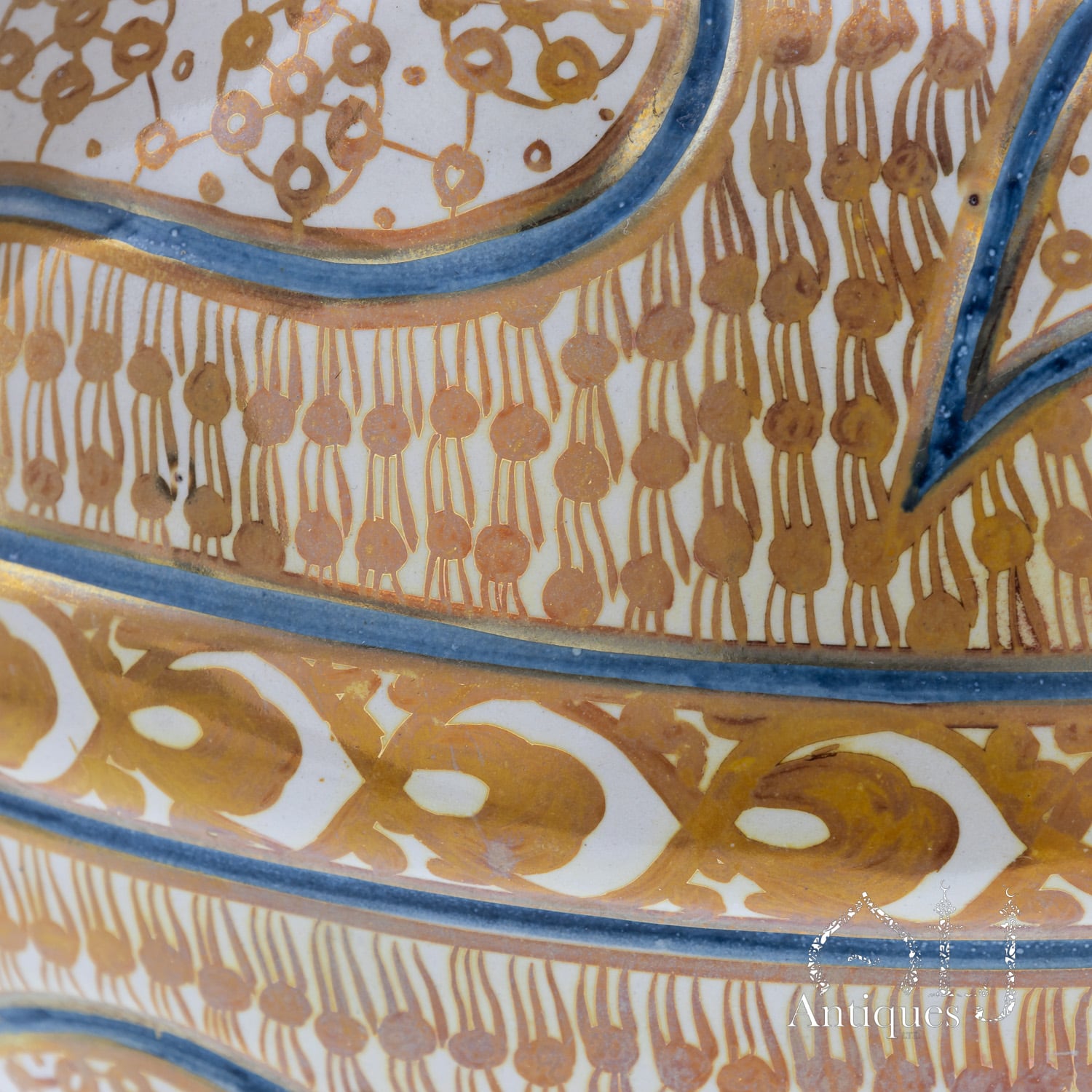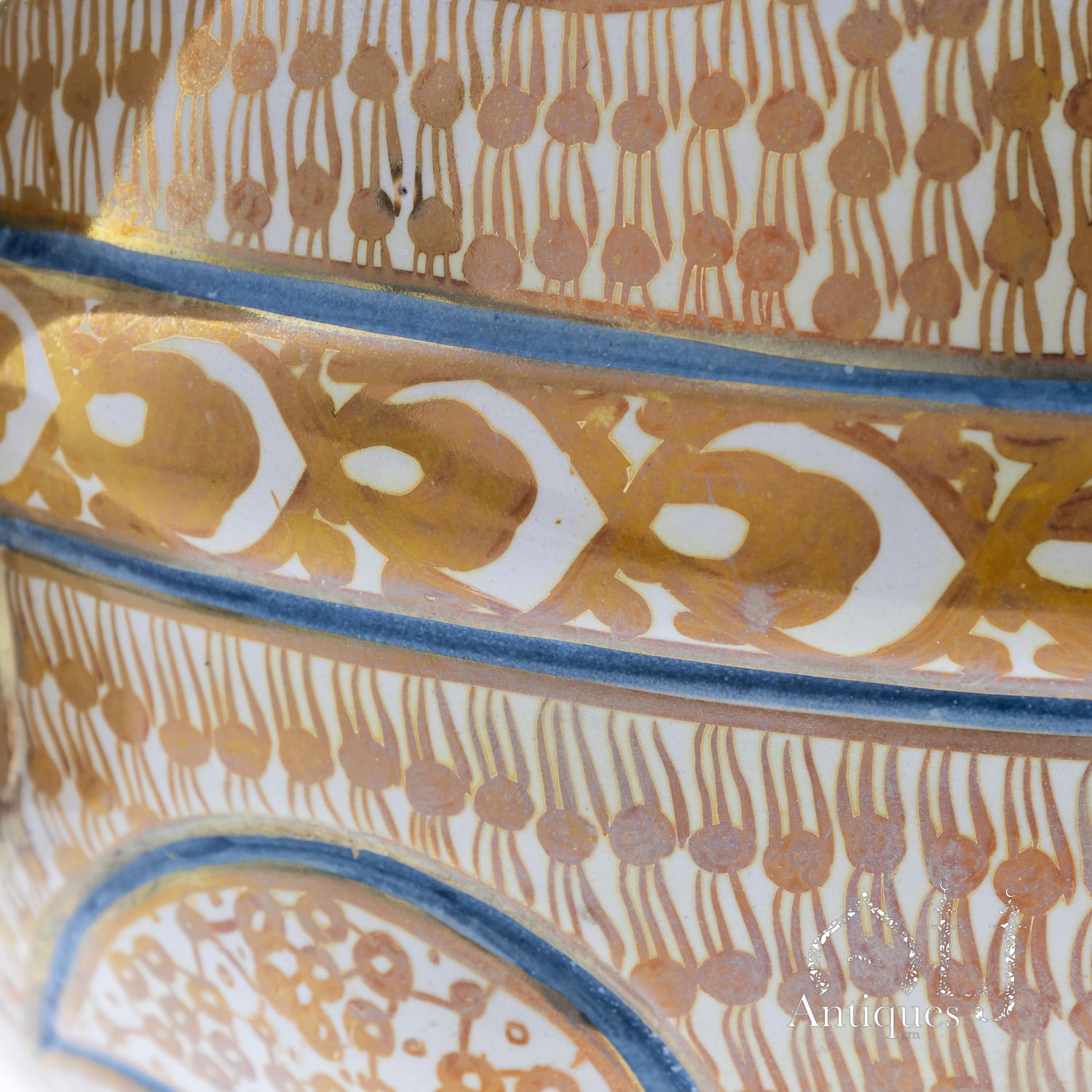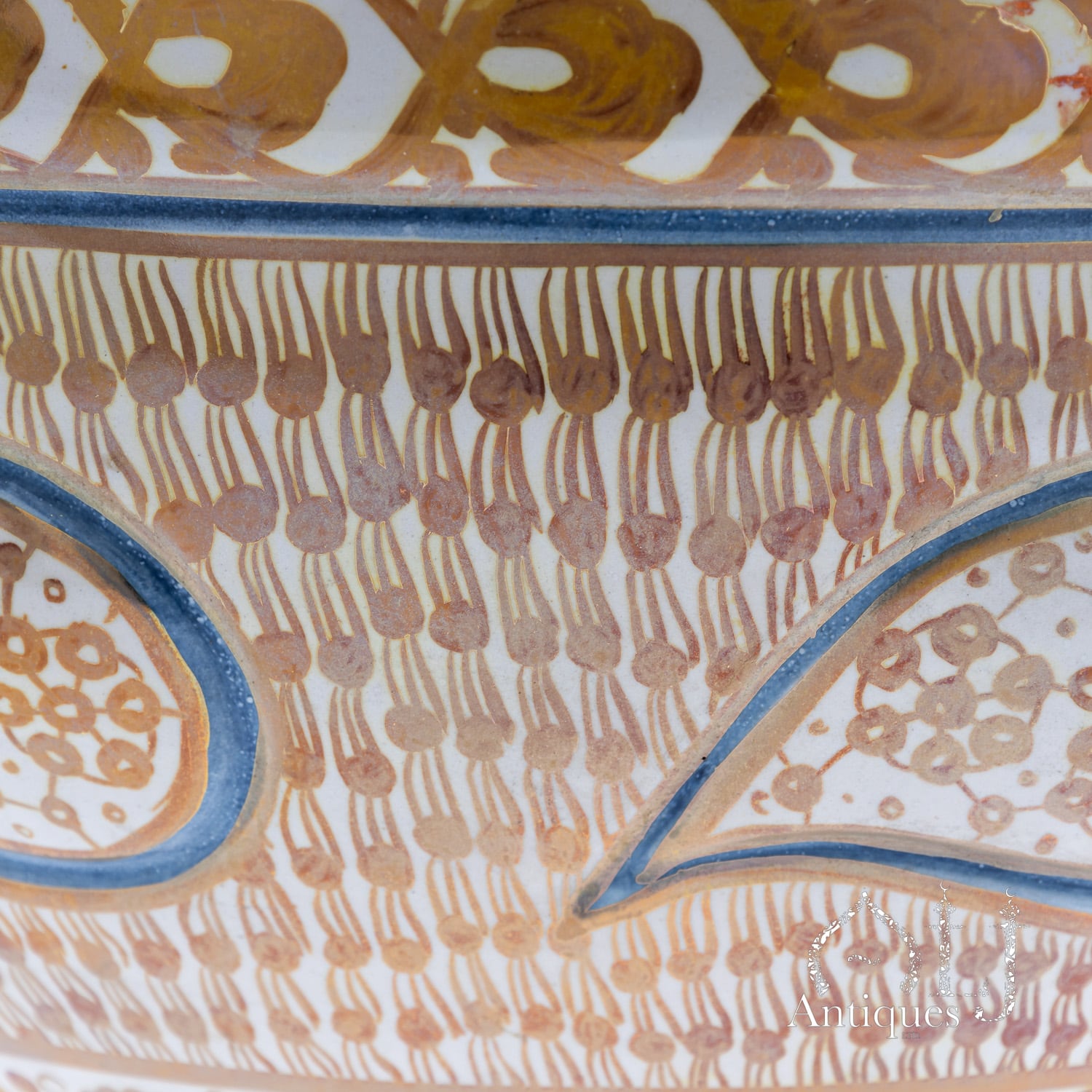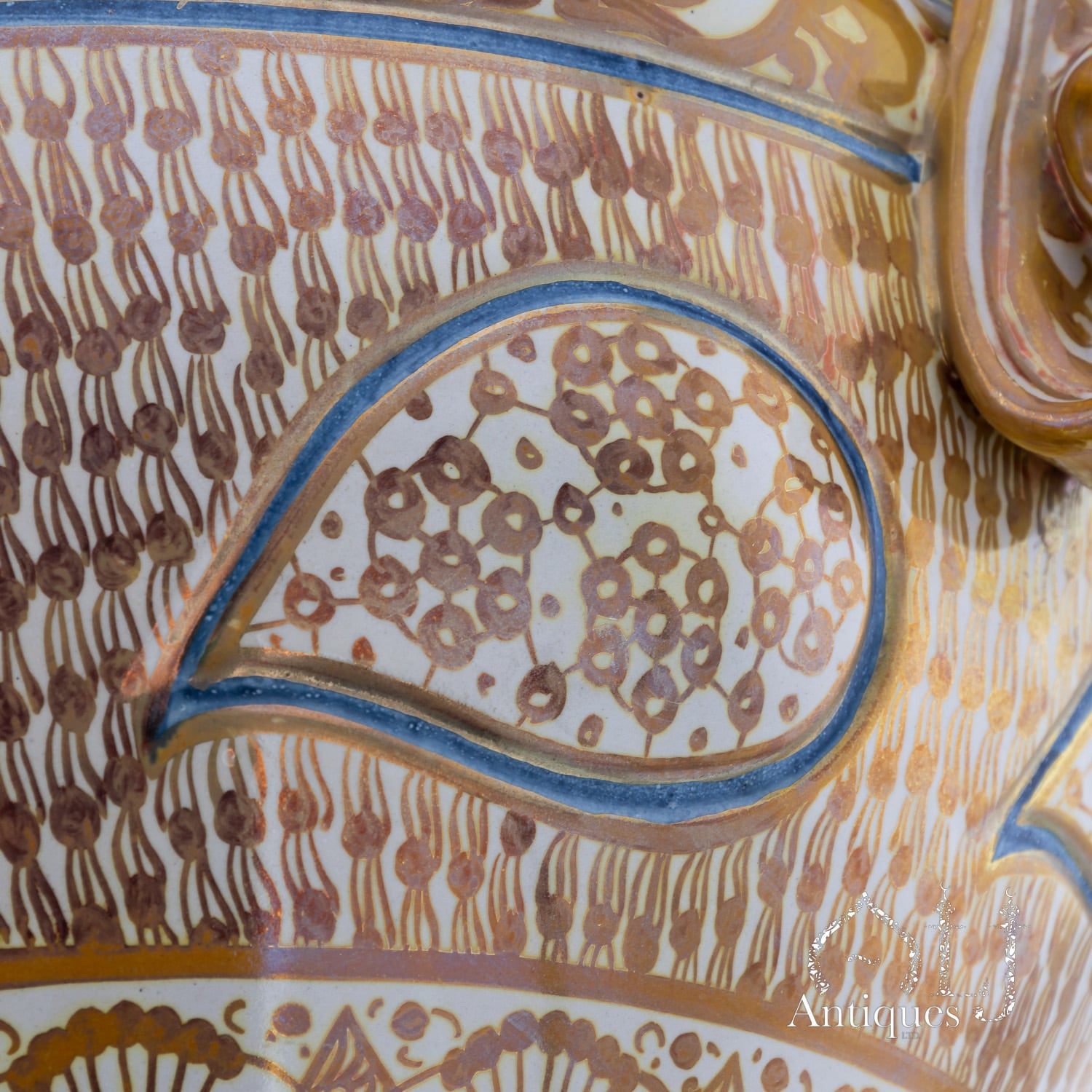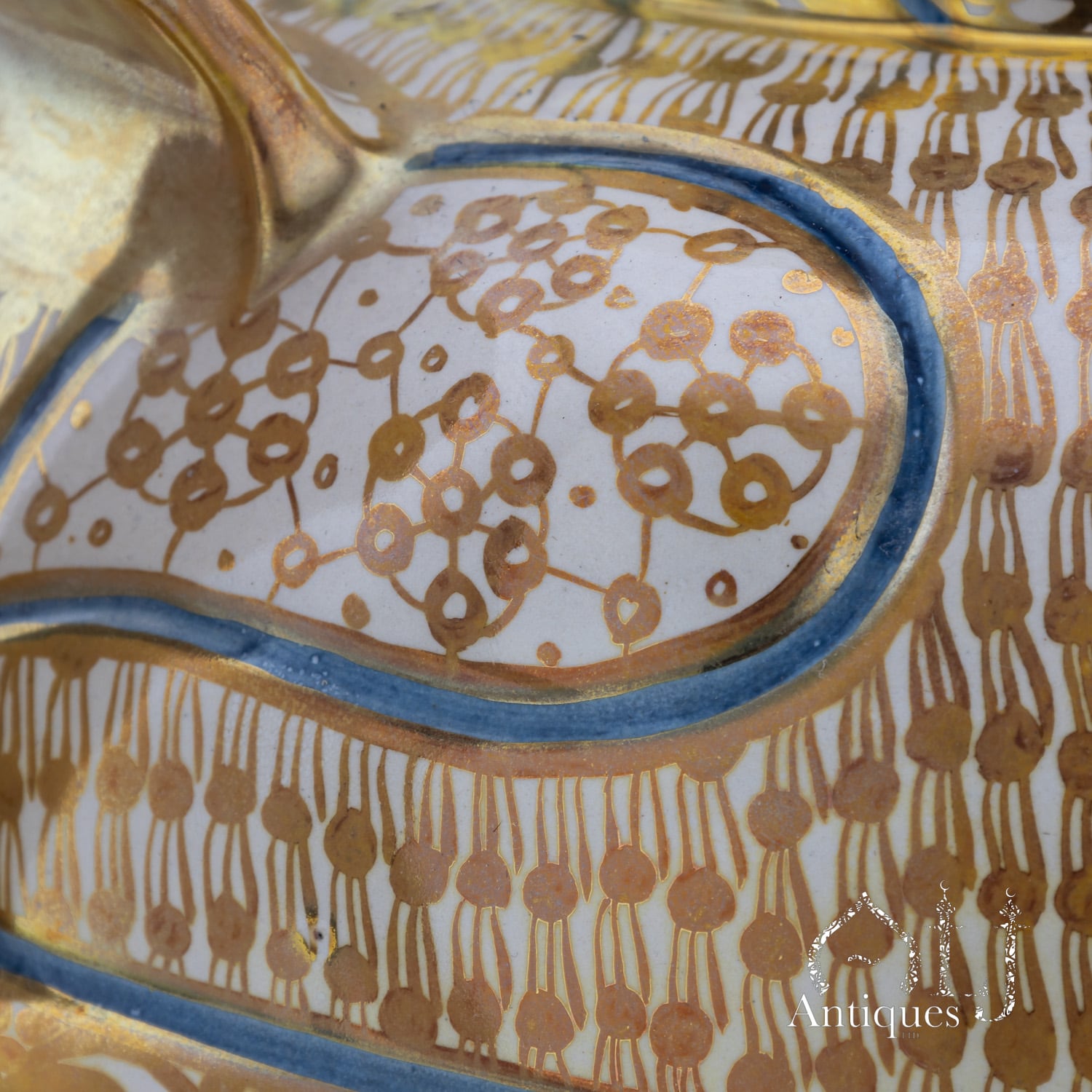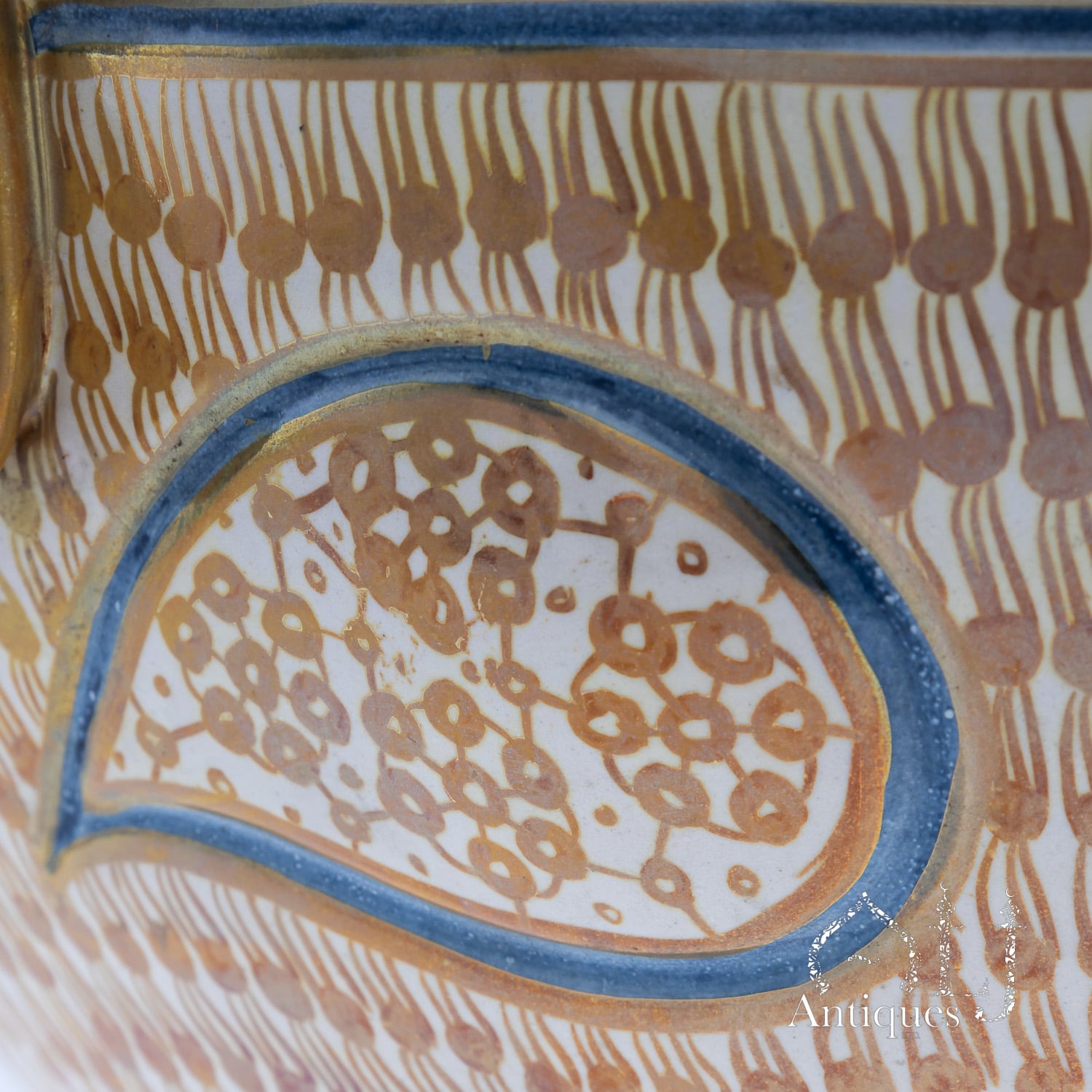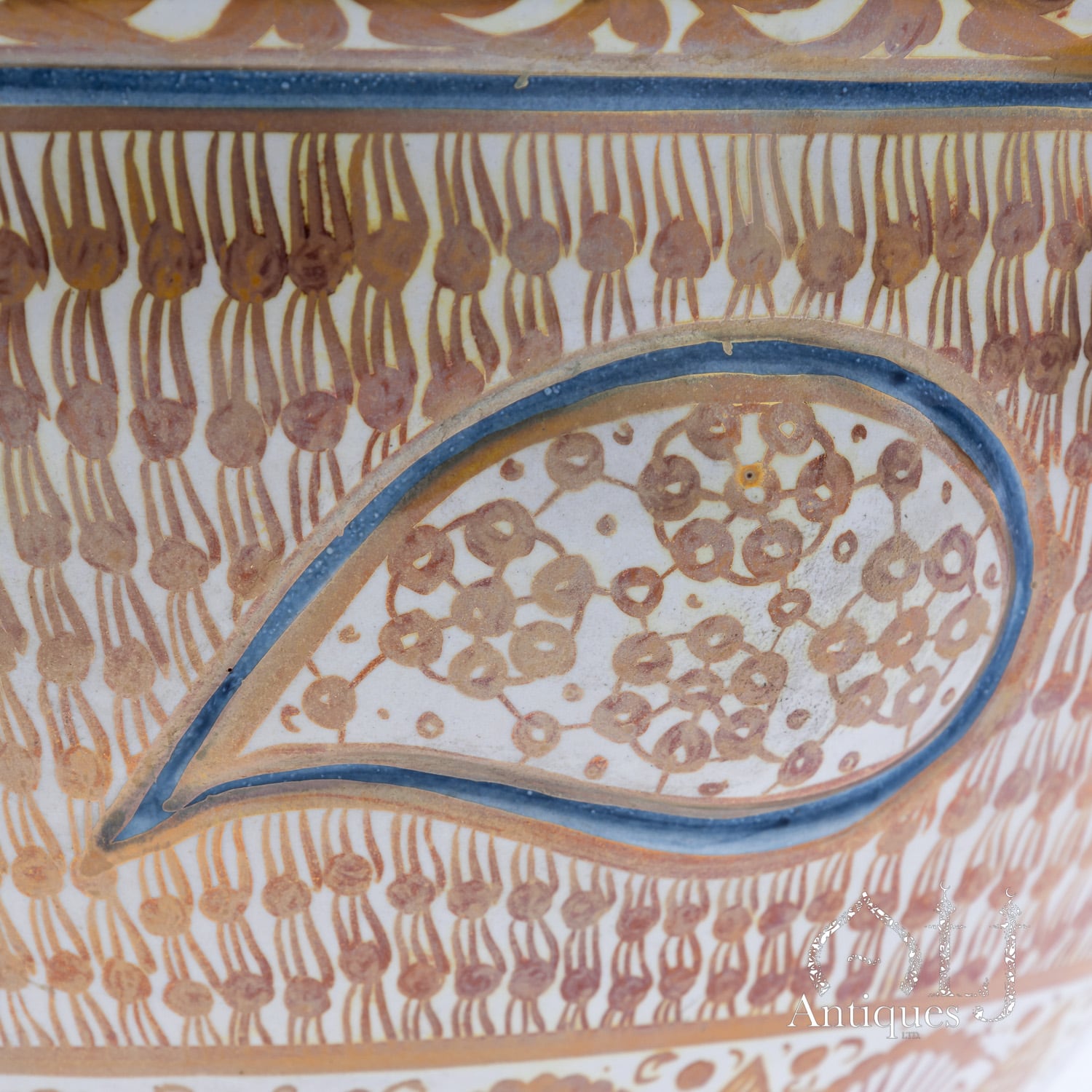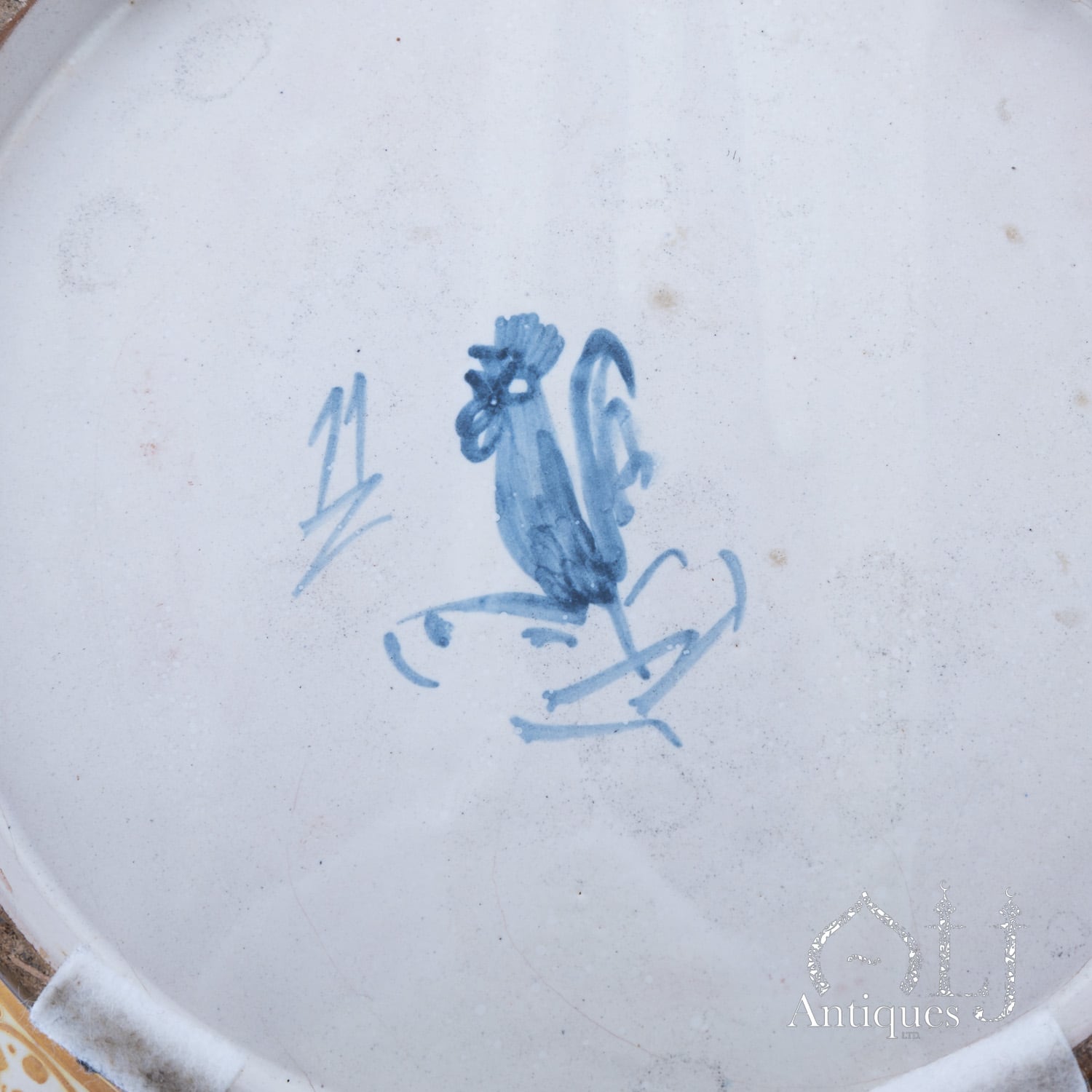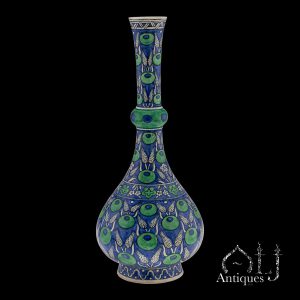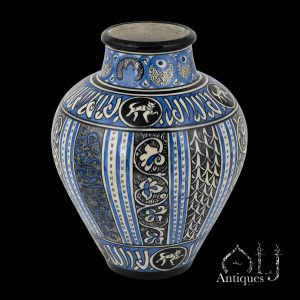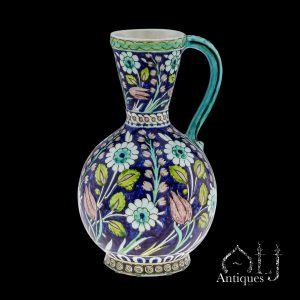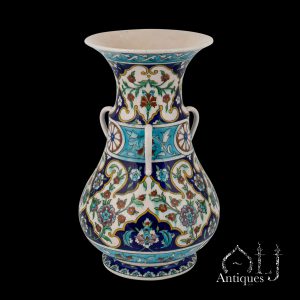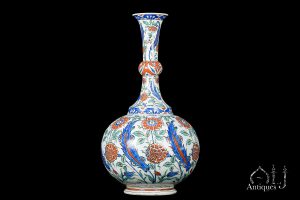Description
A rare and impressive moulded Hispano-Moresque Revival faience storage jar or jardinière by Ulisse Cantagalli, exquisitely decorated in gold lustre on a creamy ground.
The Jar is of bold globular form with a tall cylindrical neck, mounted with four gracefully twisted serpentine like handles, and supported on a narrow thick foot, this exceptional example reflects the height of 19th-century Florentine Orientalist ceramics.
The overall decoration, apart from certain specified areas, follows a tassel-like motif, composed of large suspended dot patterns hanging from three fine strings, echoing the textile-inspired ornamentation of Hispano-Moresque design.
The cylindrical neck displays a moulded frieze of wave-like panels, each outlined in cobalt blue and alternately filled with stemmed flower branches and beehive (or fish-scale) motifs.
The upper and lower parts of the jar feature a series of moulded leaf-shaped patterns, their borders outlined in cobalt blue and enriched with small floral buds, dots, and linear detailing, creating visual harmony between structure and ornament.
Two horizontal decorative bands divide the body — the upper featuring open Islamic palmettes, and the lower adorned with alternating pinecones and stylised floral heads.
The jar’s four handles, each modelled in relief and painted with a vertical chain of heart-shaped and open palmette motifs. The lustrous golden glaze, characteristic of Cantagalli’s finest work, brilliantly captures the radiance of early Hispano-Moresque lusterware, demonstrating his technical mastery and deep appreciation for Islamic art.
This jar draws direct inspiration from late 15th–early 16th century Manises ceramics from Valencia, Spain — particularly the famed moulded jars known as “Gerreta” or “Orseta”, decorated with floral and geometric motifs. A comparable example is illustrated in Balbina Martínez Caviró, Cerámica Hispano-Musulmana. Andalusí y Mudéjar, Ediciones El Viso, Madrid, 1991, p. 185, fig. 187.
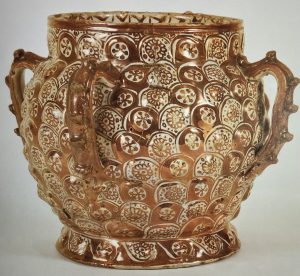
Further parallels appear in Conti & Cefariello Grosso, La Maiolica Cantagalli, Rome, 1990, p. 102, and in the exhibition catalogue “Casa Cantagalli” (London, 2002, no. 21), confirming the model’s connection to documented Cantagalli production.
The underside bears the painted cockerel mark of the Cantagalli workshop in blue, together with the number “11” and letter “Z”, identifying it as a product of the Florentine Manifattura Cantagalli, circa 1880.

